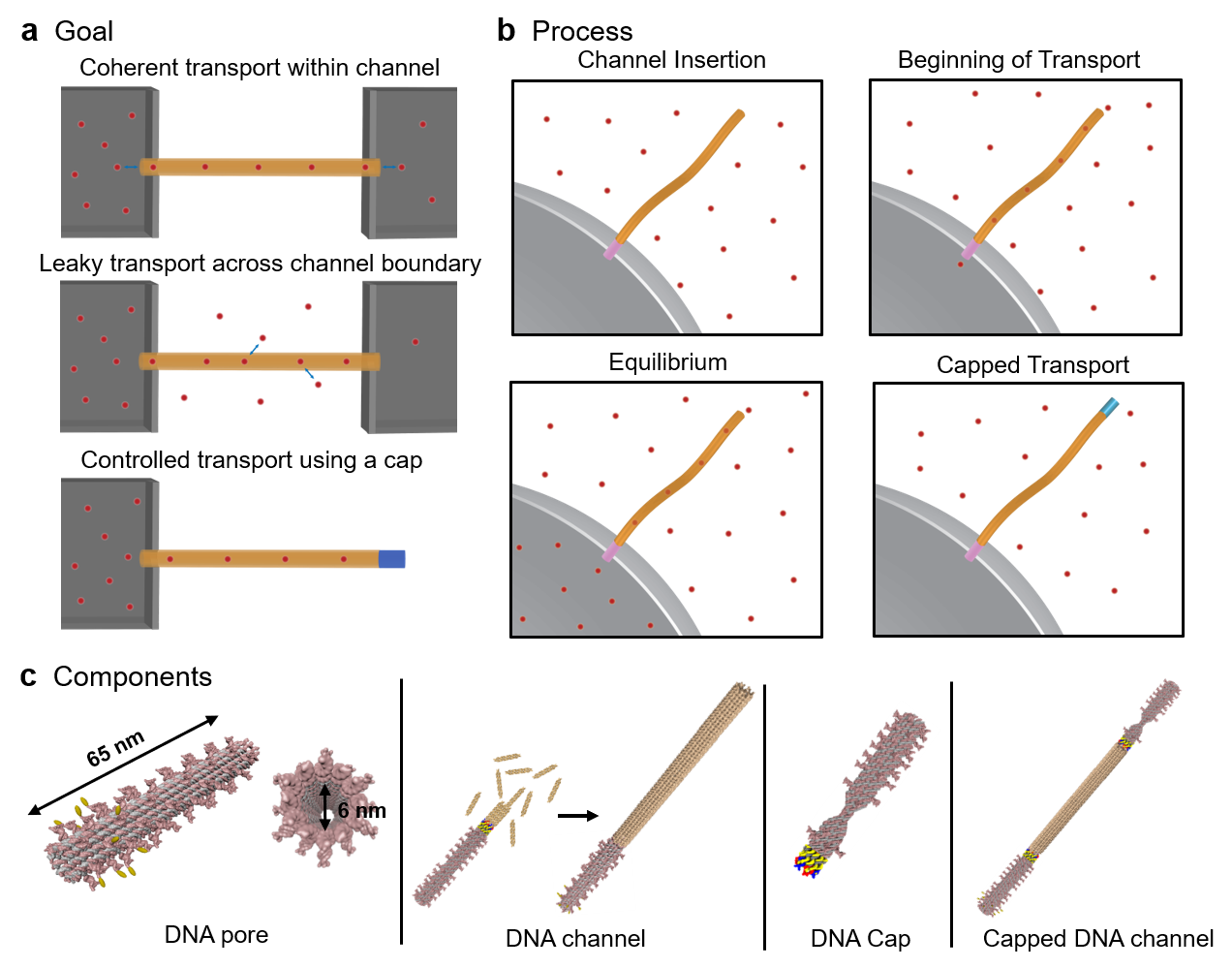(321a) Molecular Transport through Self-Assembled DNA Nanofluidic Channels
AIChE Annual Meeting
2020
2020 Virtual AIChE Annual Meeting
Nanoscale Science and Engineering Forum
Patterning and Assembly at the Nanoscale
Tuesday, November 17, 2020 - 8:00am to 8:15am
We have used techniques from structural DNA nanotechnology, which makes it possible to precisely control the geometry and chemical functionality of self-assembled structures, to construct synthetic nanoscale channels for molecular transport. The channel we have designed and constructed has an internal diameter of 4-6 nm and a length that can extend for multiple microns. It is composed of a DNA origami pore that penetrates and spans a lipid membrane and a DNA nanotube through which small molecules can transport. The nanotube self-assembles from DAE-E double crossover tiles, consisting of five DNA oligomers that grows from the DNA origami pore. Spontaneous lipid membrane incorporation is facilitated by hydrophobic functionalization of DNA origami pore via 12 cholesterol moieties. The transport through the channel can be stopped by adding a DNA origami cap that specifically binds to the channel opening and plugs the flow. These self-assembled channels can self-repair and can be grown such that their endpoints specifically attach at molecular landmarks, making them a promising biomolecular device for single molecule biosensing, for studying intercellular signaling, and for drug delivery.
We characterized molecular transport through both the DNA pore and DNA channels by confocal microscopy and a dye influx assay, in which synthesized DNA channels spontaneously inserted onto synthetic giant unilamellar vesicles. The rates of fluorescent dye transport through the channels were quantified by time-lapse observation of intensities inside many vesicles and comparing to a diffusion-dominated molecular transport model. Our results indicate that transport of small molecules through these channels is diffusive and that molecule size determines the degree to which transport may occur. We then designed a cap structure using the DNA origami technique, which has shown to bind to the open end of the channels at an over 95% yield. Experiments showed minimized molecular transport through capped DNA channels, suggesting that we have control over when the transport through the channels would occurs.
Figure 1. Scheme for studying the coherent transport of small molecules through a self-assembled DNA nanofluidic channel and the DNA nanostructure components used in the transport process. a) the goal of assembling the DNA nanofluidic channel is to study the mechanisms and rates of transport of small molecules within nanoscale channels. Whether the transport is coherent within the channel or the transport occurs across the channel boundary can be determined by characterizing the molecular transport rates when the channel is plugged with a DNA cap. b) to characterize the rates of molecular transport through a channel, the channel is inserted across a lipid membrane with a concentration gradient of small molecule fluorescent dyes across the membrane. The fluorescent dyes diffuse through the channel and enter the internal space of the membrane until reaching equilibrium. A cap that closes the channel opening would stop the transport if the dyes cannot transport across the channel boundary. c) a DNA origami nanostructure functionalized with hydrophobic moieties serves as a cross-membrane pore. DNA tiles hybridize to the DNA pore to self-assemble into a DNA nanotube that serves as the nanofluidic channel. A DNA origami nanostructure with minimal inner diameter specifically binds to the nanotube opening via complementary DNA ‘sticky ends’ to serve as a channel cap. 
